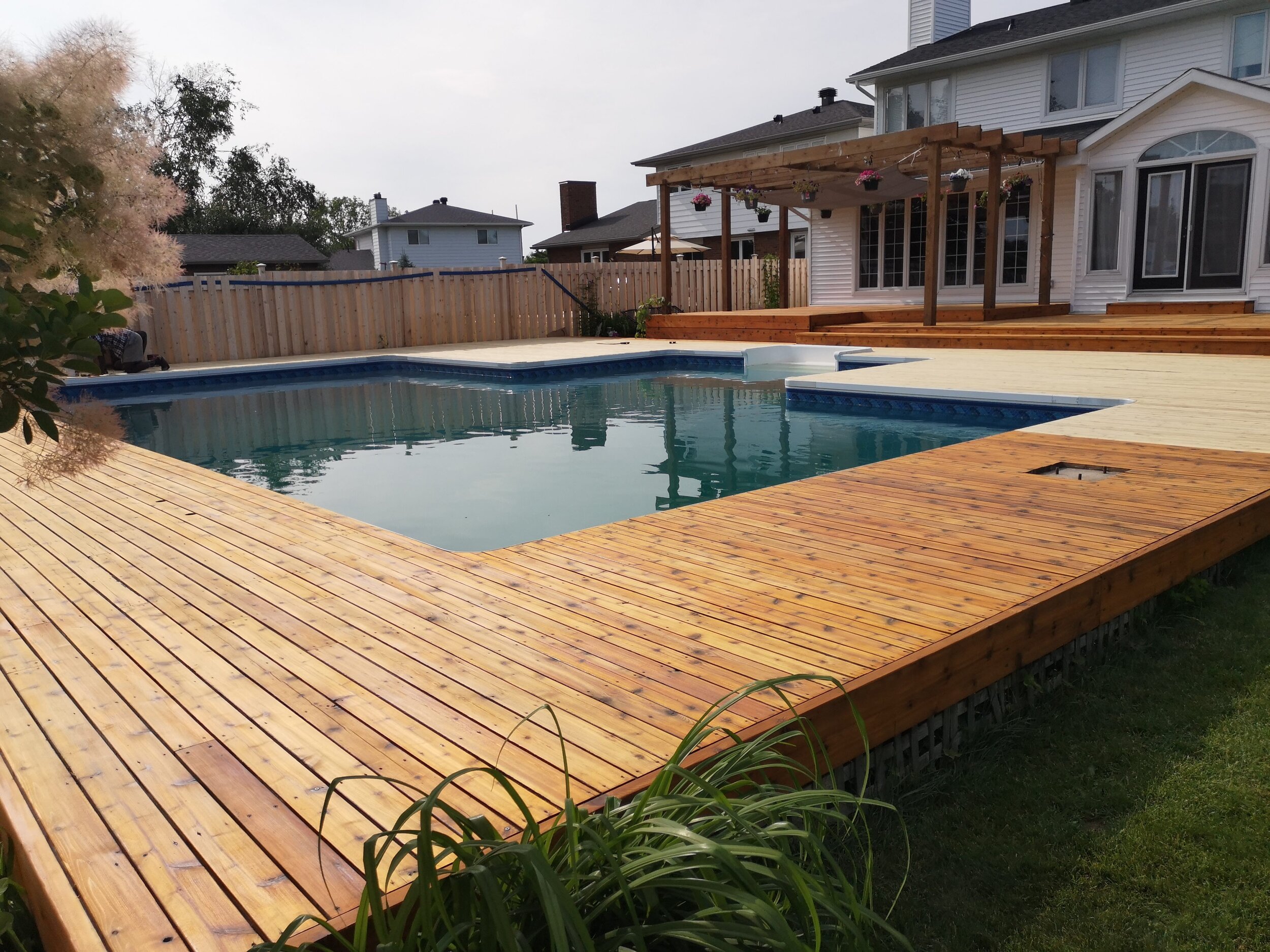Protect and Enhance: Revealing the Art of Fence Staining
Wiki Article
Selecting the Right Spot for Your Fence: Tips and Considerations
When it comes to keeping and improving the appearance of your fencing, picking the best discolor is crucial. With a broad range of choices available, it can be overwhelming to determine which tarnish will certainly best suit your demands. This guide will supply you with considerations and pointers to help you make a notified decision. We will discover the different kinds of fence stains, factors to think about before picking a stain, tips for preparing your fence for discoloration, and the differences between oil-based and water-based spots. In addition, we will look into selecting the best stain shade to match your fencing and boost your exterior area. By adhering to these standards, you can make sure that your fencing remains protected and visually pleasing for several years to come.Understanding Different Types of Fencing Stains

On the other hand, water-based stains are made from acrylic or latex and use a more refined shade to the wood. They produce a protective movie externally of the timber, preventing dampness from permeating in and securing against UV damage. Water-based discolorations are much easier to cleanse up and have a faster drying out time contrasted to oil-based spots. They are likewise less most likely to crack or fade with time.
Picking in between oil-based and water-based stains depends on different elements, consisting of individual preference, the wanted appearance, and the degree of maintenance required. Oil-based spots are recommended for fences in high-traffic locations or those frequently subjected to severe climate condition. fence staining. Water-based discolorations, on the other hand, are a popular selection for surround household areas where appearance and ease of use are necessary
When picking the ideal discolor for their fence,Comprehending the distinctions in between oil-based and water-based stains assists home owners make a notified decision. Considering the details needs of the fencing, such as its location, direct exposure to sunlight, and preferred visual, will guarantee that the chosen tarnish gives long-lasting protection and enhances the total beauty of the fencing.
Aspects to Consider Prior To Choosing a Discoloration

Another variable to think about is the sort of timber your fence is made of. Various sorts of wood soak up spots in different ways, leading to varying degrees of shade intensity and toughness. Softwoods like yearn may require more frequent staining compared to hardwoods like cedar or redwood. Furthermore, certain woods may be extra prone to concerns like rot or insect problem, which may influence the choice of tarnish to protect and protect the fence.
The climate and climate condition in your area must additionally be thought about. You may need a discolor that gives extra protection against wetness and UV rays if you live in a location with harsh winter seasons or high humidity. Likewise, if your fencing is exposed to route sunshine for extended periods, a stain with UV inhibitors can assist stop fading and staining.
Finally, it is necessary to consider your desired visual. Various stains supply various shades and finishes, permitting you to personalize the look of your fencing (fence staining). Take into consideration the total design and style of your building, as well as any type of regional laws or home owner association guidelines that may dictate the acceptable discolor colors
Tips for Readying Your Fencing for Staining
Cleaning the fencing is a crucial action as it eliminates dirt, gunk, and any previous coatings that may conflict with the staining process. Rub the surface gently, paying added interest to areas with persistent discolorations or mold and mildew.This action is crucial as staining a damp or wet surface area can lead to inadequate adhesion and an uneven coating. Guarantee that the fence is totally dry prior to proceeding with the staining procedure.
Prior to discoloration, inspect the fence for any damages, such as loosened boards or nails. Fix any kind of issues to make certain that the fencing is structurally audio. Additionally, think about applying a wood conditioner or brightener to the surface. This item aids to open up the timber pores, permitting the stain to permeate extra successfully and evenly.

Comparing Water-Based and oil-based Spots
When picking a discolor for your fencing, it is necessary to contrast the attributes and advantages of water-based and oil-based stains. Both types of discolorations have their own benefits and considerations, so it is critical to comprehend the distinctions between them.Oil-based discolorations are recognized for their durability and resistance to tear and put on. They penetrate deeply right into the timber, supplying excellent defense against the components. They also improve the all-natural charm of the wood by highlighting its grain and appearance. Additionally, oil-based spots have a tendency to last longer than water-based stains, making them a preferred option for fencings.
On the other hand, water-based discolorations are extra eco friendly and simpler to clean up. They may not provide the same degree of defense as oil-based stains, especially in severe climate problems.
Inevitably, the choice between water-based and oil-based stains relies on your specific demands and preferences. Consider elements such as durability, ecological impact, and convenience of application when making your choice. Consulting with an expert or seeking referrals from professionals can also help guarantee that you choose the right tarnish for your fencing.
Choosing the Right Discoloration Shade for Your Fencing
The option of an appropriate stain shade for your fencing is an essential aspect of enhancing its aesthetic allure and enhancing the total design of your outdoor area (fence staining companies). The ideal discolor color can transform a level, normal fence right into a striking focal point that includes depth and personality to your propertyWhen choosing a tarnish shade for your fence, it is very important to take into consideration the design and design of your home. Natural tones such as browns and neutrals can develop a warm and inviting appearance if you have a classic or standard style home. On the various other hand, if you have a modern or modern home, you might think about selecting strong and vibrant shades that make a declaration.
Another element to think about is the natural environments of your property. If you have a great deal of plant, a stain shade that matches the all-natural landscape, such as eco-friendlies or deep reds, can develop a natural and unified appearance.
Furthermore, it's worth taking into consideration the upkeep needed for various tarnish colors. Lighter shades have a tendency to show dust and use even more conveniently, while darker shades can hide imperfections and need much less constant touch-ups.
Ultimately, the option of tarnish color for your fence need to reflect your personal design and preferences - deck staining companies near me. Take the time to check out various alternatives and get in touch with with professionals if required, to guarantee that you pick the best tarnish color that improves the appeal and allure of wikipedia reference your fencing
Final Thought
In final thought, when it comes to selecting the appropriate tarnish for your fencing, it is vital to understand the various kinds of discolorations available and think about variables such as longevity and preferred look. Selecting the ideal discolor color can enhance the overall visual appeals of your fence.We will certainly check out the different kinds of fence stains, variables to take into consideration before choosing a tarnish, ideas for preparing your fence for staining, and the distinctions in between water-based and oil-based spots.Differentiating between water-based and oil-based spots is critical when understanding various kinds of fencing discolorations. Water-based discolorations are less complicated to cleanse up and have a much faster drying time compared to oil-based stains. In addition, oil-based discolorations often tend to last longer than water-based discolorations, making them a prominent option for fences.
In conclusion, when it comes to picking the ideal tarnish for your fence, it is crucial to recognize the different kinds of discolorations available and take into consideration aspects such as toughness and desired look.
Report this wiki page